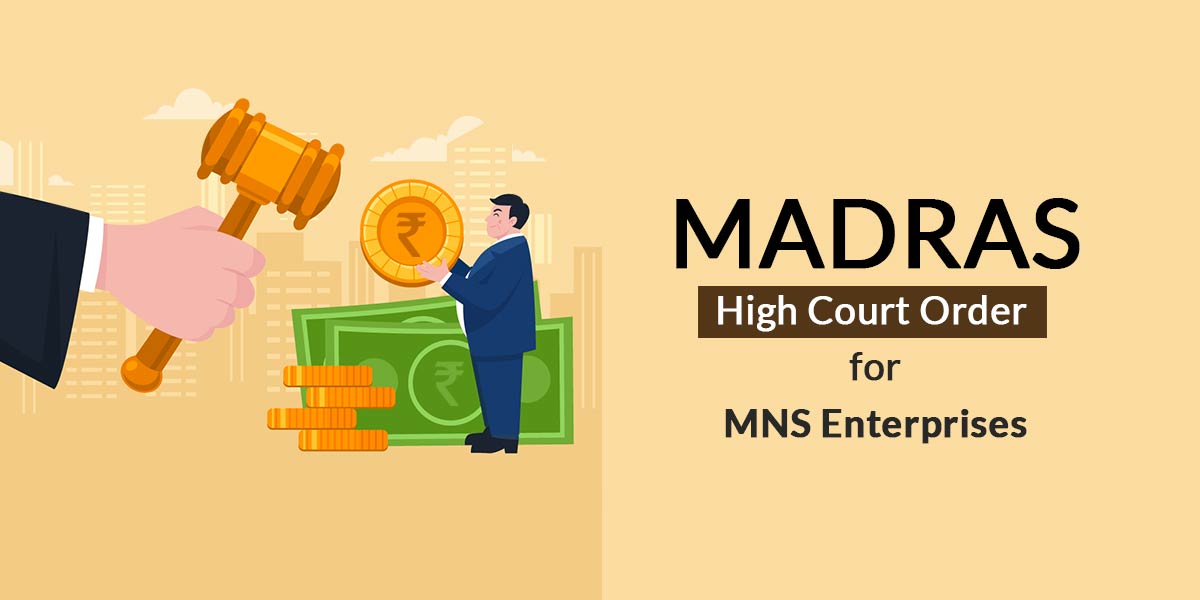
The Madras High Court bench of Justice C. Saravanan did not permit a refund of the amount relying on the taxpayer’s electronic cash ledger on the basis that there were some accusations with respect to the taxpayer to claim the bogus ITC (Input Tax Credit) in the electronic credit ledger on basis of the fake Input tax invoice for releasing the GST liability with no supply.
The writ applicant seeks the direction to refund Rs 88,17,754 which is in the applicant’s electronic ledger under Chapter IX of the CGST Rules, 2017. The electronic ledger of the applicant has seized, and then the applicant was not able to utilise the amount.
The issue that arise was whether the applicant can ask for the mandamus towards the refund of the amounts rely in the applicant’s electronic cash ledger.
For the petitioner’s proprietor, Sheik Dawood, the respondent has issued a summons. The applicant has been arrested and remanded in judicial custody. The statements takes from the proprietor of the applicant, in a letter applicants proprietor has requested to one of the customers namely Nobal Tech Industries Pvt. Ltd, to leave the left amount to the applicant as outstanding to be directly furnished to the applicant’s GSTN account.
Beneath coercion the letter was received counsel for applicant specified and that the amounts inside the ledger has ruined the daily business of the applicant and the applicant was not able to furnish either to the suppliers or pay salary to its employees.
Counsel for the applicant submitted that customer to force for remitting the amount to the applicants GSTN account excluding the show cause notice issuance was without authority of law and the council has practically malfunction the business of the applicant besides placing the proprietor of the applicantjudicial custody for a period of two months, opposing to safeguards prescribed under the CGST Act.
Section 79 of the CGST Act is similar to a recovery mechanism mentioned under Section 11 of the Central Excise Act, 1944, Section 87 of the Finance act, 1994, and Chapter V of the Finance Act, 1994. The proper method beneath the CGST Act for the Department is to first thoroughly investigate and then issue a proper show cause notice under Sections 73 and 74 of the CGST Act, 2017 and judge in the way as mentioned beneath the CGST Act. under the mentioned law the recovery will be prosecuted and the recovery of the amount as the tax will be in violation of article 265 of the Indian constitution.
Rs 11.80 cr has been revealed as fraud money which the applicant has executed on the basis of bogus invoices to discharge the tax liability and the amount in the GSTN for a sum of Rs. 88,17,754 was a mere 7% of the estimated tax liability, which is pegged at Rs. 11.80 crores.
The court depends on the decision of the Supreme Court in the case of the State of Uttar Pradesh Vs. Singhara Singh and Others, where it was rendered that when the law mandates the specific things to be executed in a specific way, then the same is to be performed in the described way. Hence, the amount that has been deposited into the Electronic Liability Register of the petitioner by the petitioner’s customer or client cannot be ordered to be refunded directly. There is another person additional to the applicant who has deposited the amount in the electronic cash ledger on the behalf of the applicant. This is proof from a reading of section 49 of the CGST act, 2017 read with Rule 86 of the CGST Rules, 2017.
“If the payment was coerced to be paid into the Electronic Liability Register of the petitioner by obtaining a letter from the petitioner, it may be an ingenious way of creating a liquidity crunch to ensure such an amount is not frittered away. As mentioned above, whether the payment was made under compulsion or otherwise, cannot be decided in this summary proceeding. It is for the petitioner to work out the remedy under law for refund of the amount under Section 54 of the CGST Act, 2017 read with provisions of Chapter X of the CGST Rules, 2017, the court sees.”
The court sees that the amount inside the electronic liability register would be used through the applicant for discharging tax liability with respect to future supplies to be formed via applicants for these supplies. the tax to be paid by the petitioner is adjudicated and determined and appropriated in the proposed proceedings under Section 73 or 74 of the CGST Act, 2017, in which case, Section 79 of the CGST Act, 2017 can be pressed into service.
“As the amount has not been debited and since it has not been appropriated so far, there is no scope for granting any relief to the petitioner in this writ petition. I, therefore, do not find any merit in the present Writ Petition. Therefore, the present Writ Petition is liable to be dismissed. I, however, give liberty to the petitioner to work out an appropriate remedy under Section 54 of the CGST Act read with Chapter X of the CGST Rules, the court mentioned.”
The court rendered the respondent to provide the proper show-cause notice to the applicant, preferably within a period of three months.